1. Balut – Philippines
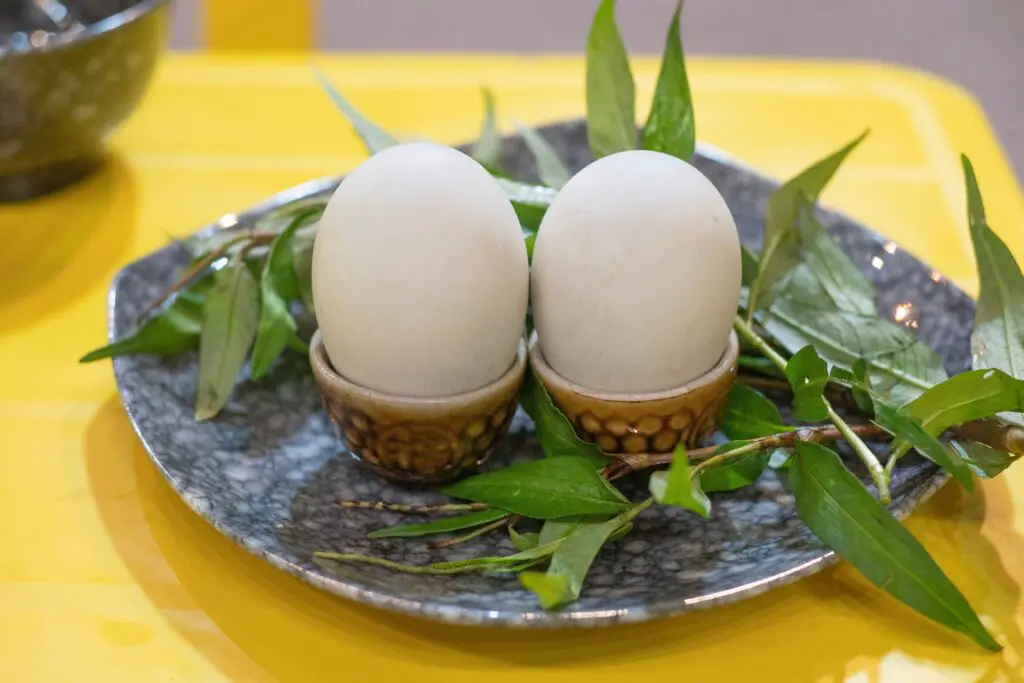
Imagine cracking open a duck egg and discovering not just yolk, but a partially developed duck embryo inside. That’s balut, and while it’s a popular street snack in the Philippines, it’s often met with wide eyes and squeamish tourists. The embryo is usually around 17 days old, which means you’ll see feathers, bones, and a tiny beak when you take a bite. The locals love it for its rich flavor and believe it’s packed with nutrients and even aphrodisiac powers says the San Francisco Standard.
It’s often served warm, with a sprinkle of salt or a splash of vinegar. For some, it’s the texture that’s the real hurdle—chewy, runny, and crunchy all in one go. Eating balut is considered a rite of passage for daring travelers. And while it might be tough to swallow at first, plenty of brave eaters say it’s surprisingly tasty once you get past the shock shares MSN.
2. Fried Tarantulas – Cambodia
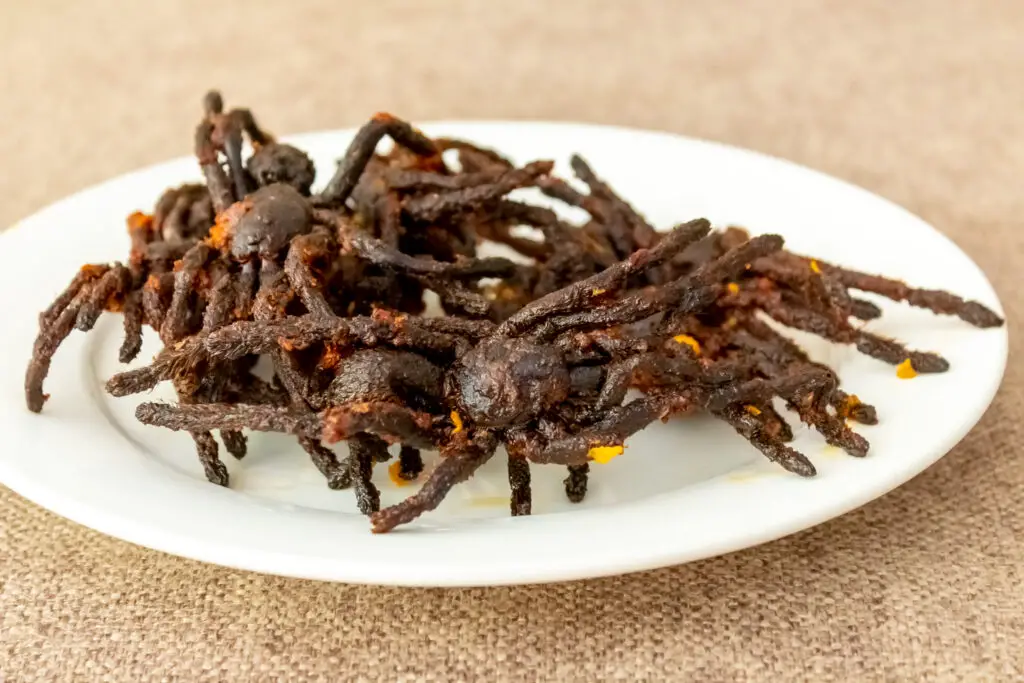
If you’ve ever wondered what spiders taste like, Cambodia has the answer. Fried tarantulas are a beloved snack in places like Skuon, where vendors sell them by the pile. The spiders are deep-fried until their legs are crispy and their bodies are soft and gooey inside. It’s a popular treat that dates back to food shortages during the Khmer Rouge regime, and the tradition stuck says Food & Wine.
They’re usually seasoned with sugar, garlic, and salt, giving them a crunchy-sweet flavor. Tourists often eat them on a dare, but some end up genuinely enjoying the nutty taste. It’s a big jump for anyone with arachnophobia, though—you’re staring straight into those eight eyes before taking a bite. But if you can get past the idea, the experience is one for the books adds DW.
3. Surströmming – Sweden

This Swedish delicacy is so pungent, it’s often eaten outdoors to avoid clearing out the room. Surströmming is fermented herring that’s been packed in a can and left to sit for months. When you open it, the smell is… unforgettable. It’s been compared to rotting garbage or a backed-up sewer—and that’s being generous.
But locals swear by it, usually eating it with flatbread, potatoes, and onions to balance the overwhelming flavor. Tourists, on the other hand, usually approach it like a Fear Factor challenge. If you can hold your nose and muscle through the first bite, some say it’s not as bad as it smells. Still, most folks walk away with watery eyes and a great story.
4. Casu Marzu – Italy

Casu Marzu looks like a regular sheep cheese—until you realize it’s full of live maggots. Found mostly in Sardinia, this illegal-in-some-places cheese is actually fermented by the larvae themselves. The maggots break down the fats, making it soft and spreadable, though they’re still wriggling around while you eat it. It’s as bizarre as it sounds, but surprisingly traditional.
Some people remove the larvae before eating, while others pop them right in their mouths along with the cheese. It’s creamy, tangy, and pungent, with a spicy aftertaste. The trick is closing your eyes and not thinking about what’s crawling across your bread. For the truly adventurous, this is a culinary badge of honor.
5. Century Egg – China

Despite the name, a century egg isn’t actually 100 years old—it just looks like it might be. Preserved in clay, ash, and salt for several weeks to months, these eggs turn dark green and black with a gelatinous texture. The yolk becomes creamy and often has a strong ammonia smell. At first glance, it seems more like science experiment than food.
Still, they’re a delicacy in Chinese cuisine, often sliced and served with tofu or congee. The flavor is surprisingly mild compared to the scent, with an earthy, rich taste. It’s the look that usually throws people off—dark and slightly alien. But once you stop thinking “rotten egg,” it’s not half bad.
6. Hákarl – Iceland
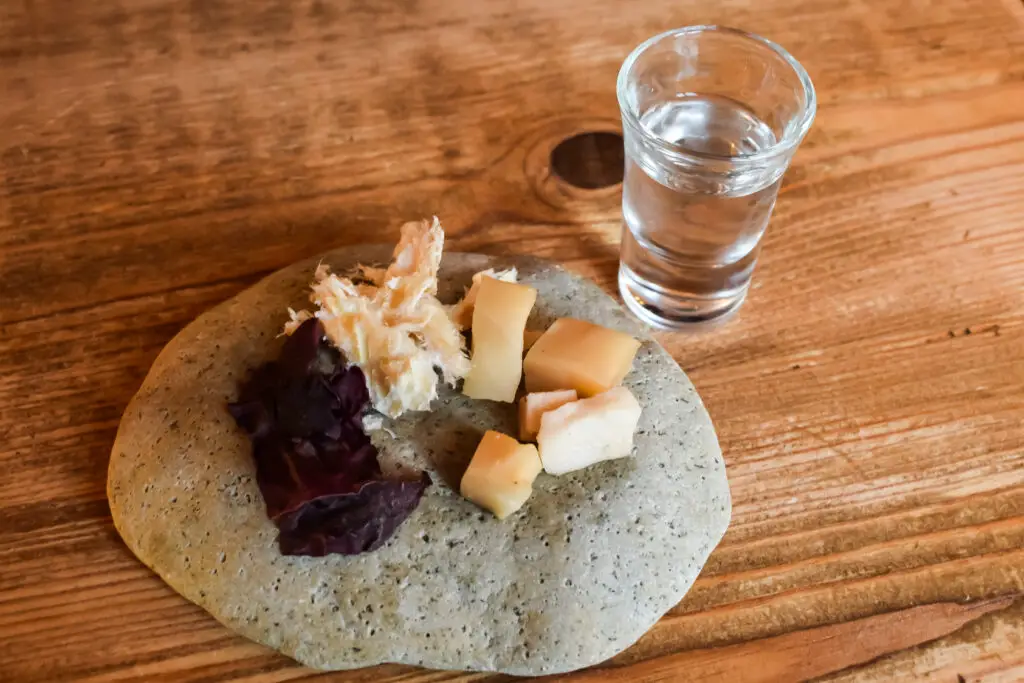
This fermented Greenland shark has a reputation that precedes it. Hákarl is buried underground for several weeks to ferment, then hung to dry for months. The result is a fish with a smell so strong it’s often compared to cleaning products or old urine. Even celebrity chef Anthony Bourdain called it “the single worst, most disgusting and terrible tasting thing” he’d ever eaten.
Traditionally, it’s served in cubes and sometimes chased with a shot of brennivín, an Icelandic schnapps. Locals are used to the taste, which they describe as ammonia-rich and chewy. Tourists usually can’t get past the smell long enough to chew. But hey, if you want bragging rights, this is a top-tier challenge.
7. Tuna Eyeballs – Japan
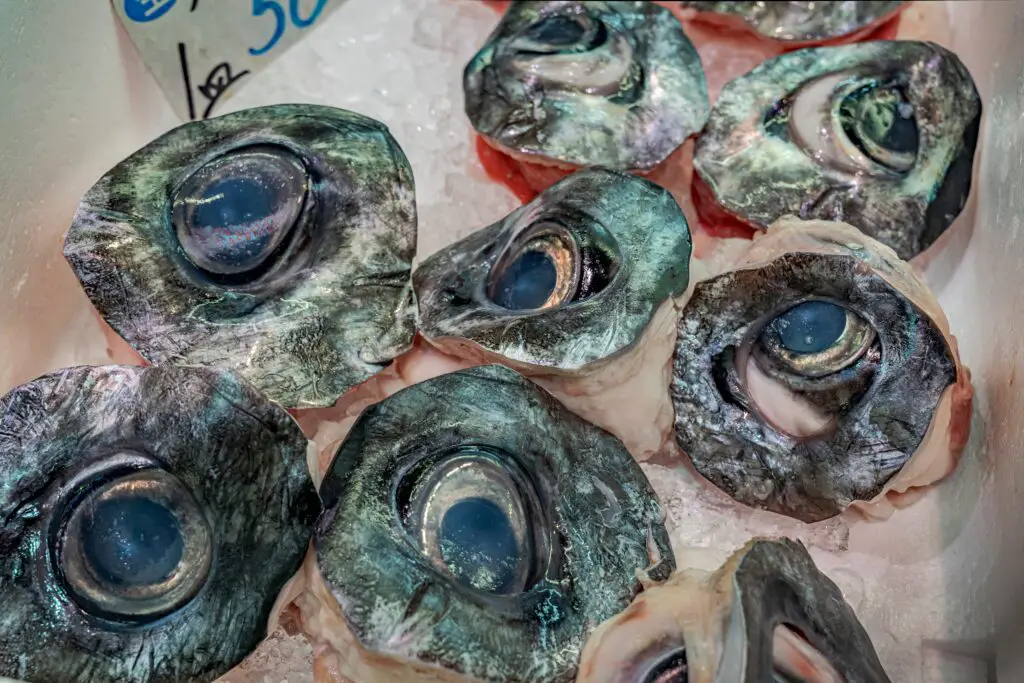
If you thought fish was the weirdest thing on the sushi menu, think again. In Japanese markets, you can find tuna eyeballs for sale—giant orbs the size of golf balls. They’re typically boiled or steamed, and some people season them with soy sauce or garlic. The texture is a mix of rubbery and gooey, depending on which part you bite into.
They’re surprisingly high in protein and omega-3s, making them both a daring and nutritious snack. The flavor is mild, almost like squid or octopus, but the presentation can be unsettling. Many tourists eat one just to say they did, then immediately reach for water. But hey, one eye-opening experience never hurt.
8. Sannakji – South Korea

Sannakji is a dish that literally fights back. It’s made from freshly cut octopus, served raw and still squirming on the plate. The tentacles move due to nerve activity, so you might need to chase your food around with chopsticks. It’s not for the faint of heart or anyone nervous about choking hazards—those suckers really stick.
You dip it in sesame oil or soy sauce, and it’s considered a delicacy in Korean seafood markets. The texture is chewy, and the taste is clean and slightly briny. Locals enjoy it for its freshness and novelty, but for tourists, it’s often about the thrill. Eating something that’s still moving? That’s a dare with flair.
9. Mopane Worms – Southern Africa

These plump caterpillars are a staple snack in countries like Zimbabwe and Botswana. They’re picked from mopane trees, boiled, and often sun-dried or fried until crispy. Rich in protein and widely available, they’re an important food source—though for tourists, they often look more like bait than lunch. When cooked right, they have a smoky, earthy flavor.
Some people compare them to jerky or crispy chips, especially when seasoned with chili or garlic. But getting past the idea of eating a giant worm is half the challenge. Locals might laugh kindly at tourists’ hesitations, then pop one in their mouth without a second thought. If you can do the same, you’ve earned your travel badge.
10. Escamoles – Mexico
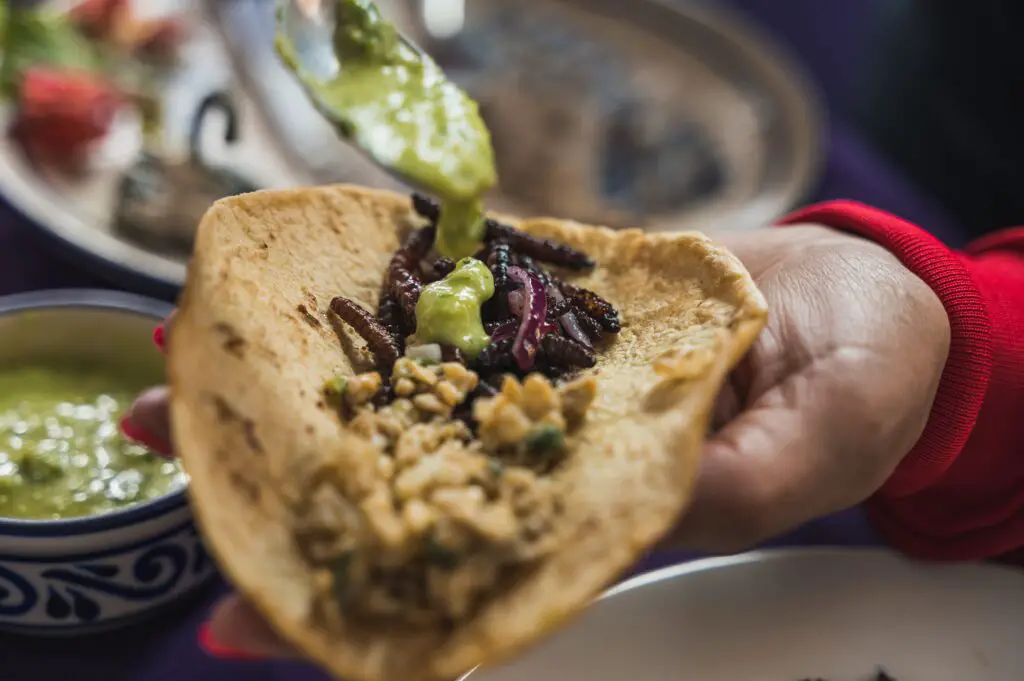
Nicknamed “insect caviar,” escamoles are the larvae of ants, harvested from agave roots. It’s a delicacy in central Mexico, especially around Mexico City. The texture is buttery and the flavor is nutty, especially when sautéed with garlic and butter. Served in tacos or with tortillas, they’re surprisingly upscale for something that comes from an anthill.
Tourists are often shocked to learn what they’re eating after the first bite. They’re not slimy or crunchy—just soft, rich, and oddly satisfying. Once you get over the mental image of an ant nursery, they’re actually quite enjoyable. It’s one of those foods where the name scares you more than the flavor.
11. Shirako – Japan

Shirako translates to “white children” in Japanese, which is just the start of the weirdness. It’s actually the milt, or sperm sacs, of male fish like cod or pufferfish. The creamy, custard-like texture and oceanic flavor make it a high-end delicacy in Japan. You’ll find it steamed, grilled, or even served raw in sushi.
Tourists usually react with shock once they find out what it is. But chefs praise its richness and subtle taste. It’s an acquired texture more than an acquired taste—soft, almost like a warm pudding. If you can silence your inner voice yelling “Nope!”, you might just be pleasantly surprised.
12. Kiviak – Greenland

This Arctic dish takes commitment. Kiviak is made by stuffing hundreds of small seabirds called auks into a seal carcass, then burying it under rocks for several months to ferment. The result is a pungent, oily delicacy eaten during winter celebrations. The flavor is intensely fishy and gamey, with a strong ammonia scent.
Locals slice it open and dig in, feathers and all. Tourists often struggle with the idea, let alone the taste. It’s like combining strong cheese with fish oil and a dash of wild bird. Definitely not for the faint of heart, but undeniably unforgettable.
13. Jellied Moose Nose – Canada

Yes, you read that right—moose nose. This northern Canadian dish is made by boiling the nose, removing the hair, then cooking it with spices and cooling it into a jelly. The result is a wobbly, meaty slab with layers of skin, fat, and cartilage. It’s a traditional food for Indigenous communities and surprisingly well-respected locally.
Tourists, though, tend to react with skepticism. The texture is gelatinous and slightly rubbery, and the flavor is mild but earthy. It’s often served cold, which makes the jelly texture even more intense. But if you’re looking to surprise your taste buds, this definitely qualifies.
14. Stink Bugs – Thailand
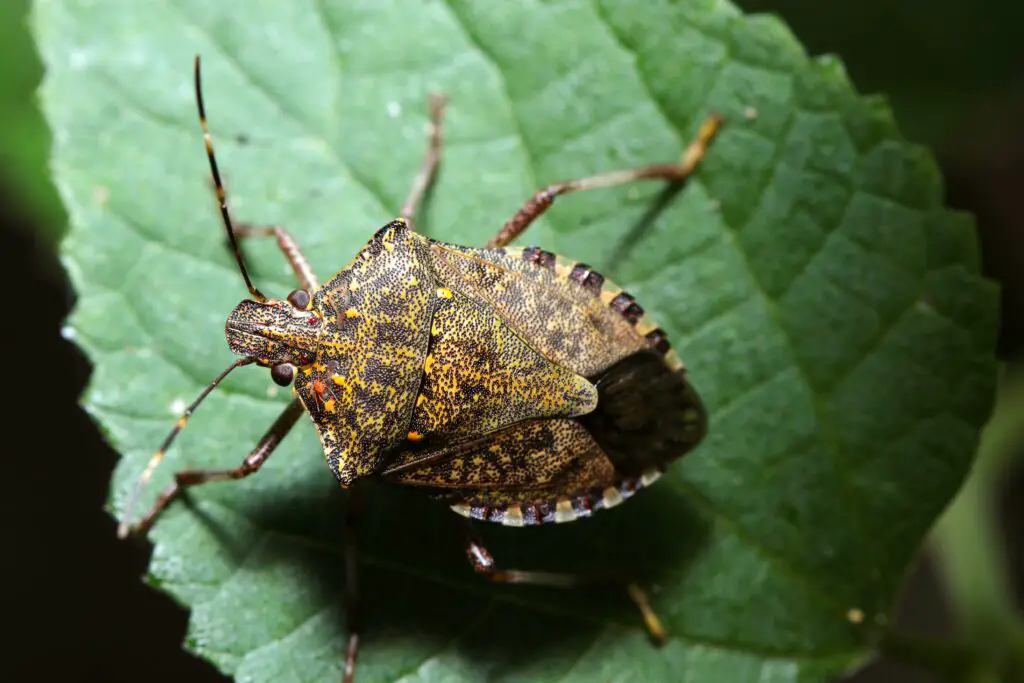
Crunchy, smelly, and full of protein, stink bugs are a popular snack in rural Thailand. They’re usually fried or roasted, and yes—they do smell like their name implies. The taste has been described as medicinal or minty, depending on how they’re cooked. Locals enjoy them as a crunchy, salty treat that pairs well with beer.
Tourists usually gag at the first whiff but power through for the story. The texture is crisp on the outside, with a soft center. They’re not for everyone, but they’re definitely memorable. If you can eat one without flinching, you’ve earned some serious street food street cred.
